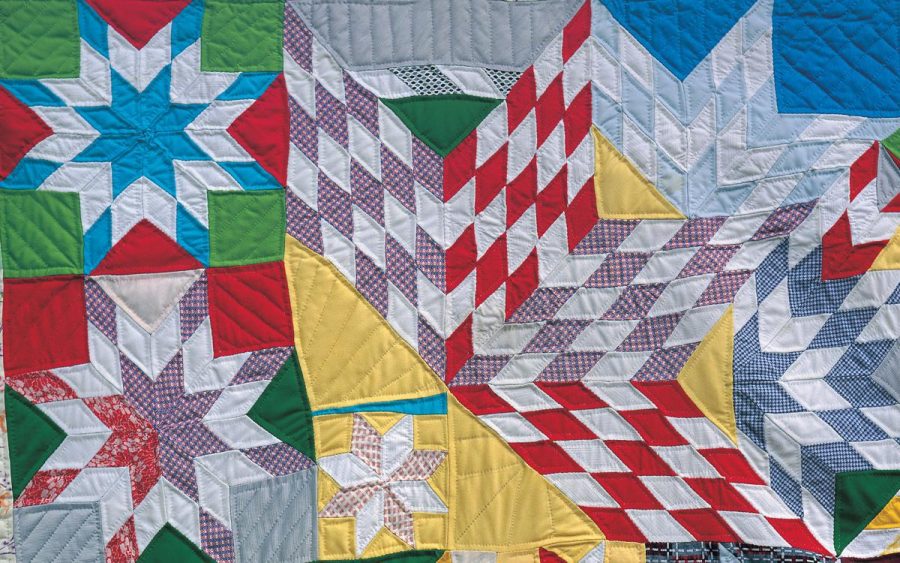UMFA’s ‘Handstitched World: The Cartography of Quilts’ Changes the Way You See Quilts
“Star Quilt” by Mora McKeown Ezell in the “Handstitched World” exhibit at the Utah Museum of Fine Arts. (Courtesy UMFA)
March 27, 2022
As a traditionally feminine enterprise, quilting has long been devalued — they are what you snuggle under on a long winter’s night, never mind the design and quality of the stitch work. The Utah Museum of Fine Art’s new exhibition “Handstitched World: The Cartography of Quilts” subverts this and draws attention to the creativity and craft that goes into every single stitch, presenting quilts as the art that they are. “Handcrafted World” brings to the forefront art that would otherwise be overlooked, and makes you think about what you have pushed to the back of your closet.
Quilts on Quilts on Quilts
All good museum exhibits tell a story and “Handstitched World” illustrates how the same can be said about quilts.
Pieces such as “The Abraham Lincoln Flag Quilt,” “The Hmong Story Quilt” and “Contrary to Hearsay: He Wasn’t the Devil” commemorate historical events. The quilt entitled “In Honor Shall Waves Spread” includes a depiction of a 1902 worker’s strike.
History is also told through a piece like “Soldier’s Quilt” which was quilted out of military uniforms probably during a British soldier’s downtime while in India. It was most likely a man that made this quilt which contradicts previously held perceptions of quilters.
As the wall plaques read, “The quilts can be read as extensions of the hands, bodies, minds and spirits that constructed them … like a roadmap quilts direct us to their place of origin.” A quilt doesn’t need to be “The Hmong Story Quilt” to intricately tell a story about the person that made it. Something as simple, yet covert, as the type of cloth and thread used can tell you about the quilter, where they lived and when the piece was made.
The exhibit boasts a wide spectrum of quilts and the countless styles and techniques found in different times and places. A sampler made in 1890’s Austria is very different from a quilt made in 1970’s Alabama.
My favorite piece of the collection was the previously mentioned “Contrary to Hearsay,” not your typical quilt. The artist Jean-Marcel St. Jacques made the piece out of wood, nails and other bits of debris that he collected around New Orleans after Hurricane Katrina. The ruin of homes is beautifully transformed into something intimately connected with that beloved place, and reclaims it. “Contrary to Hearsay” expands and redefines what a quilt can be.
Unfortunately, the quilts are not shown off to their best advantage. The presentation does not help to tell the story. While I understand that textiles are light sensitive, and the low light is best for their preservation, it is not best to see them by. The lighting does not reinforce and highlight the colors of the quilts, and they are further drained by the sickly pea green of the wall they are mounted against. The darkness of the lighting gives the exhibit a grave austerity that is completely at odds with the homey warmth of quilts.
Looking at Quilts Differently
Toward the back of “Handcrafted World,” there is a space where children can put together pictures to make their own quilt map. Along the same walls are contact information for quilting guilds around Utah, if the exhibit has inspired you to learn more about the discipline, as it should.
One thing is for sure, after walking through the exhibits, you will never be able to look at quilts the same way.








